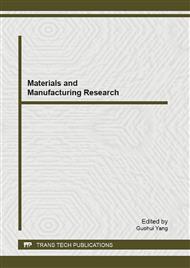p.198
p.202
p.209
p.213
p.217
p.223
p.227
p.232
p.237
Slow-Release Carbon Source Composite Materials’ Preparation and Used for Denitrification in Groundwater
Abstract:
Four kinds of slow-release carbon source composite materials were prepared and used as carbon source and biofilm attachment carrier for groundwater nitrate pollution bioremediation. Their performances were detected through static and continuous experiments. The results showed that: In the static experiments, HB20 and HB40 had general release carbon ability, their CODMn were 5.42 and 12.83 mg/L respectively; In the continuous experiments, NO3-N removal rate of HLE decreased from 57.9% to 13.1% within 30 days, the denitrification endurance was not good. Organic carbon source can be released continuously by HBE which had the best denitrifying effect. In the operation of 66 days, above 96.0% NO3-N was removed and NO2-N level was below 0.02mg/L when influent NO3-N =30.0mg/L and HRT=24h. HBE was the most suitable carbon source carrier material which was used in groundwater nitrate pollution bioremediation.
Info:
Periodical:
Pages:
217-222
Citation:
Online since:
January 2013
Authors:
Price:
Сopyright:
© 2013 Trans Tech Publications Ltd. All Rights Reserved
Share:
Citation:


